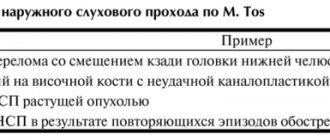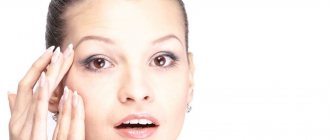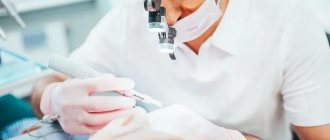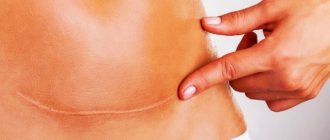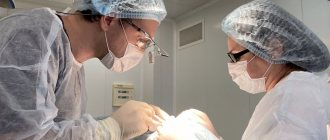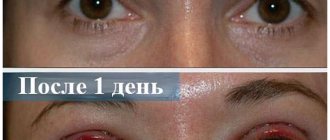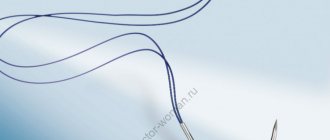Defects and deformations of the auricle are very numerous and varied, both in shape and severity, and in the reasons for their occurrence. They can be either acquired as a result of mechanical, chemical or thermal trauma, tumor removal, or congenital - microtia and anotia.
…
Correction or complete restoration of the auricle after injury and, especially, as a result of abnormal development represent considerable difficulties and are one of the most difficult problems in plastic and maxillofacial surgery, despite modern advances in these areas.
Prices for services
| Price | On credit* | |
| Otoplasty - one-sided plastic surgery of protruding (protruding) ears | 27,000 rub. | from RUB 2,698/month |
| Plastic surgery of protruding (protruding) ears, one-sided, category II | 37,000 rub. | from RUB 3,697/month |
| Otoplasty - plastic surgery of protruding (protruding) ears, bilateral | 39900 rub. | from RUB 3,987/month |
| Plastic surgery of protruding (protruding) ears, bilateral category II | 44900 rub. | from 4,487 rub./month |
| Elimination of auricle defect (plasticity of the earlobe on one side) | 12500 rub. | — |
| Elimination of auricle defect (correction of the earlobe hole on one side) | 8100 rub. | — |
| Auriculoplasty (curl surgery on one side) | 15500 rub. | — |
| Consultation with a plastic surgeon for surgery | 0 rub. | — |
Average cost of services
You can find out how much our plastic surgery services cost on average by calling in St. Petersburg: +7
SM-Clinic surgeons will develop an individual operation plan for you, since surgical body correction is often planned and carried out in a complex manner. The exact cost is calculated individually after consultation with a doctor.
Plastic surgery on credit and in installments
In addition to operations to eliminate protruding ears, otoplasty is also in demand for other deformities - the so-called satyr ears, Darwin's tubercle, and excessively large ears. Surgical intervention also allows you to reduce or enlarge the earlobes and remove keloid scars.
Elimination of protruding ears
Prominent ears mean protruding ears (excessive distance of the ears from the head). This is the most common congenital ear deformity. Correction of protruding ears is usually performed under local anesthesia, and discharge from the clinic is possible on the same day. An incision is made along the back surface of the ear (in such a way that the postoperative scar will be hidden in the natural postauricular groove), while the essence of the intervention comes down to the isolation of the ear cartilage and subsequent manipulations with it - weakening the cartilage, its modeling and suturing, resulting in the formation of the existing Normally, there is a characteristic pattern of the auricle, and the ear itself is pressed against the head. Treatment of ear cartilage can be carried out using a laser - in this case it is laser otoplasty. In case of unilateral protruding ears, the operation is performed on one side, and the healthy pinna is the guideline for correcting the protruding ear. In some cases, if the cartilage of the auricle is very hard and elastic, protruding ears may return after surgery. In such cases, repeat otoplasty is performed.
Reconstruction and correction of the ears
Ear reconstruction represents one of the most difficult problems in head and neck reconstructive surgery. This is due to the unique structural topography of the outer ear. Multiple bulges and depressions of the cartilaginous frame are covered with very thin, tight-fitting skin. All of this skin and cartilage framework exists as a separate three-dimensional structure protruding from the side of the head.
The main goal of auricular reconstruction is to accurately duplicate the missing anatomical parts. Properties of the normal ear that must be preserved in all reconstructive attempts include size, position, orientation, and finally anatomical landmarks.
The lower edges of the helix and lobe run parallel to the outer edge of the ramus of the lower jaw. The upper attachment point of the auricle is located at the level of the outer corner of the eye, the lower - approximately at the level of the tip of the nose. The upper edge of the auricle is at the level of the eyebrows. The average length of the auricle of an adult is 6.5 cm, width - 3.5 cm. The length of the earlobe is 1.5-2 cm. There are a large number of variations in the shape and nature of the attachment of the earlobe. The angle between the plane of the auricle and the head is normally approximately 30°.
Lobe correction
The lobe is a separate anatomical and aesthetic unit of the auricle. Earlobe correction may be required in the following cases:
- protruding lobes;
- lobes too big;
- postoperative deformation of the lobes (for example, after a facelift);
- “torn” lobes;
Protruding earlobes are a particular type of protruding ears. Elimination of this deformation is carried out by excision of a section of skin on the posterior surface of the lobe of a triangular or diamond shape; When suturing the remaining wound, the lobe is pressed to the head. To reduce an overly large lobe, a similar technique is used, but the area to be removed is larger and includes the skin of both the anterior and posterior surfaces of the lobe, as well as the subcutaneous tissue located between them.
Deformation of the lobe after a surgical facelift is another common reason for intervention. An elongated lobe is a stigma of a facelift; Numerous methods have been developed to avoid this deformation when suturing a parotid incision, and modern facelift techniques are no longer fraught with the formation of an elongated lobe. However, patients with such lobes still occur (in fact, any parotid incision can deform the lobe - for example, an incision for surgery on the parotid salivary gland). To eliminate this deformation, the lobe is cut off from the skin of the face, after which the cut off corner is pulled up, recreating the lost roundness.
The most difficult for surgical correction is the “torn” lobe. It can actually be torn as a result of injury - usually the earring catches on clothing when undressing or dressing, and a sharp tug leads to the earlobe cutting through. In case of emergency treatment, the lobe can be sutured immediately, and its deformation as a result of injury will be minimal. If a torn lobe is left to heal on its own, it will not heal back - the edges of the tear will be overgrown with skin, forming a double lobe. In this case, the correction becomes more difficult, because the surgeon has to re-expose the edges of the tear and very accurately compare the two halves of the lobe, which during the time elapsed after the injury could have become deformed as a result of the scarring process. But the most difficult to eliminate is the deformation of the lobes in the form of “tunnels”, because in this case the skin is significantly overstretched, and the existing defect is too large to be sutured directly. In such patients, the lobe actually has to be recreated, creating many flaps from the existing soft tissue.
Correction of the ears for penetrating defects
Among all the defects of the auricle, partial defects of the helix occupy a leading place. As a rule, such defects arise as a result of mechanical damage, or bites by a person or animal, less often due to thermal burns, electrical trauma, or removal of tumors.
Fig.15
To create a curl, flaps are used, cut on a wide base in the scalp against the curl defect. The flap is formed by two parallel incisions running from the scalp to the base of the auricle, where it is sutured to the posterior edge of the defect. This method eliminates the curl defect,
